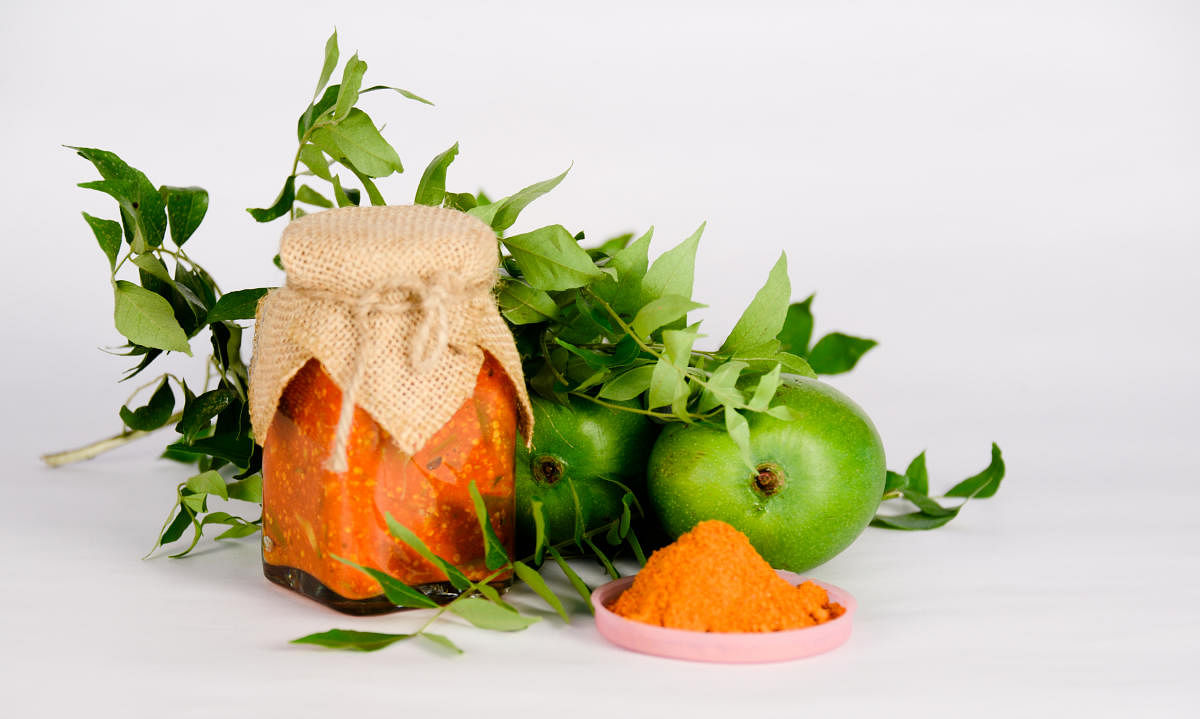
It may occupy the smallest and most obscure corner of the plate. But it’s the go-to dish on the average south Indian platter. Few can resist the pull or pulla (sour, in Telugu) of the Andhra avakai, the red, radioactive mango pickle. Your fingers may stray to the day’s specials on the plate or leaf, but you can’t help going back to the delicious distraction staring at you.
Pickles are meant to be accompaniments, but the avakai is on another plane. Nothing makes you drool as the avakai does, as its red hot lava oozes down the white mountain of steaming rice. The upma, coconut rice or curd rice owe it to the avakai for their acceptance. After a meal, a chunk of the mango is saved to be lodged in the cheek till its juices are fully extracted. The annual avakai project kicks off in summer when mangoes flood the market. The “omelette” mango, an oversized, juicy variety, is chosen carefully and diced.
Then the spices, including the mustard powder or ava pindi in Telugu, from which the pickle derives its name, are measured meticulously and mixed together with the mango chunks with a generous helping of oil.
The rich mixture is then transferred to the brown ceramic jars from which the family scoops out the stuff periodically. The spice mixture on the ladle that was used to stir the pickle is not washed away but is salvaged fully to be relished during dinner.
Every bit is precious!
It’s no surprise then that it is among the most valuable items in the baggage of the homesick flier, heading back to the US after his visit back home. More precious than the duds gifted by his family, which he uses to cushion the bottle from the reckless baggage-handlers since instructions like “Handle with care. Explosive pickle inside” will get him into trouble. He’s not worried that the leaking bottles may ruin the other stuff in the baggage but that his friends will get a whiff of the pickles, which he’s obliged to share with them later. That’s because the avakai is a godsend for bachelors living away from home, and makes for a quick meal to be mixed with rice or just as a bread spread or a chapati filling.
(This column looks at some food fetishes and secrets from a city of gastronomes and beyond.)